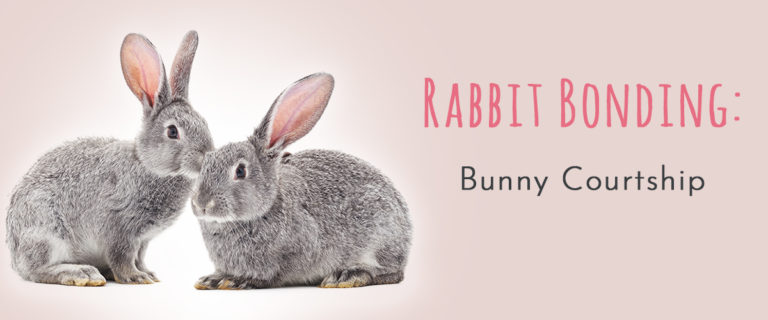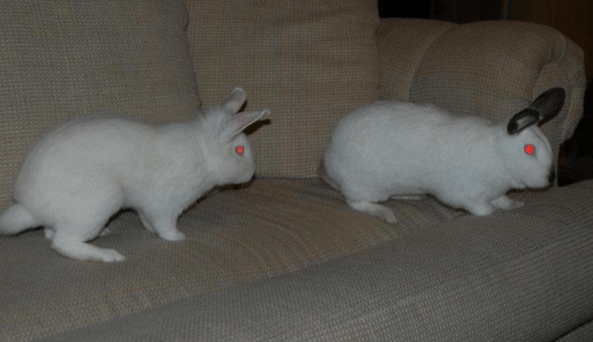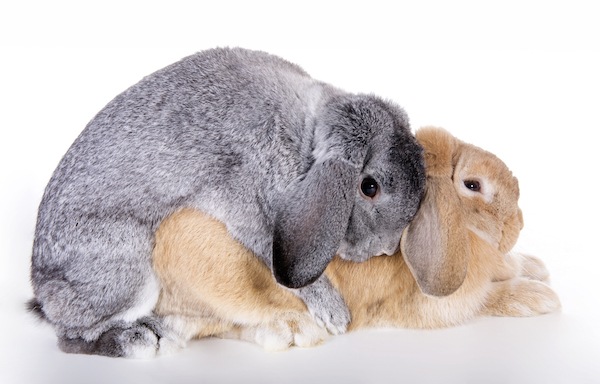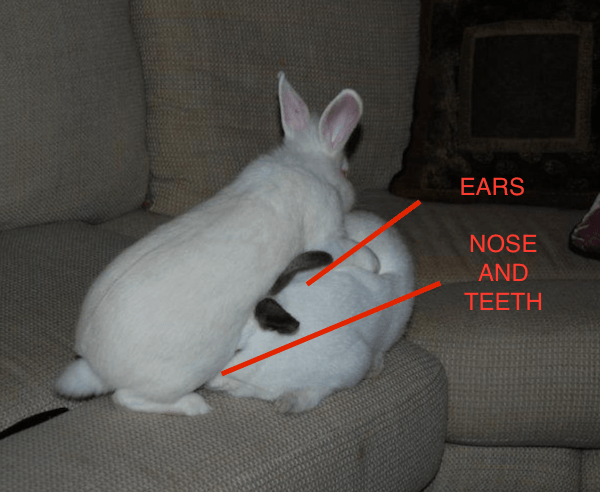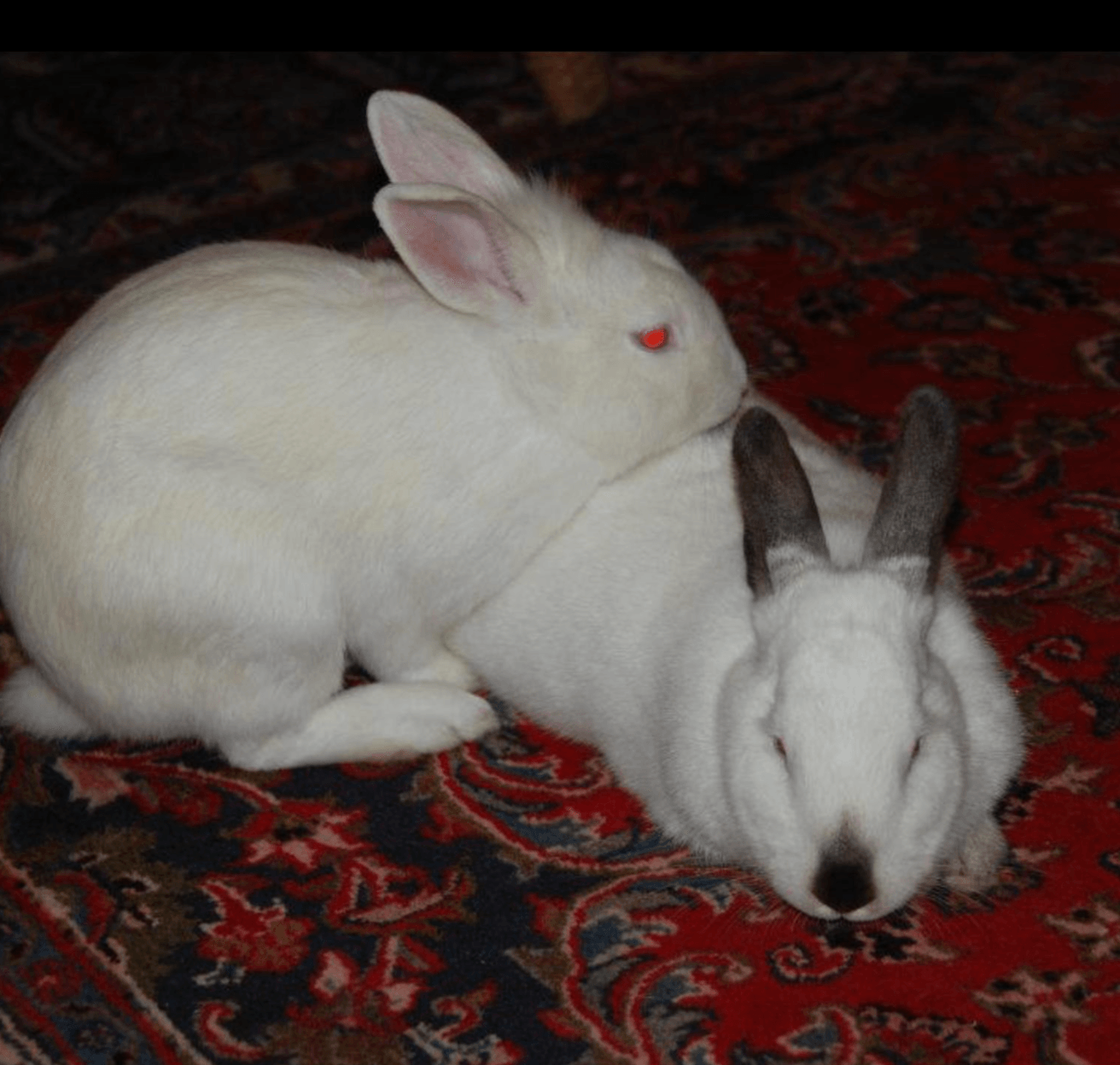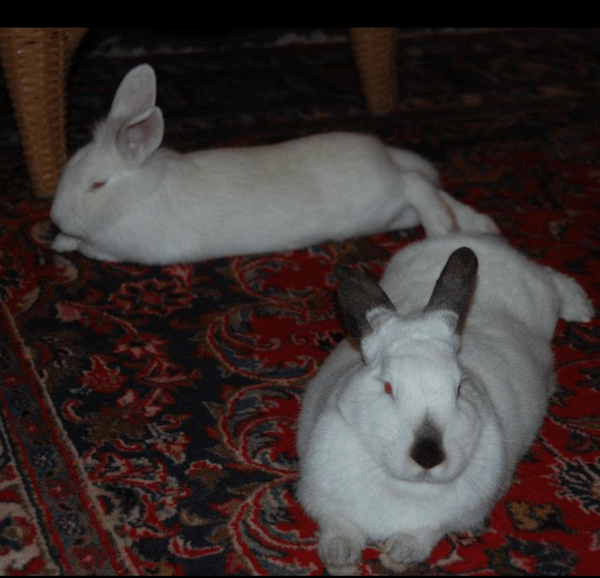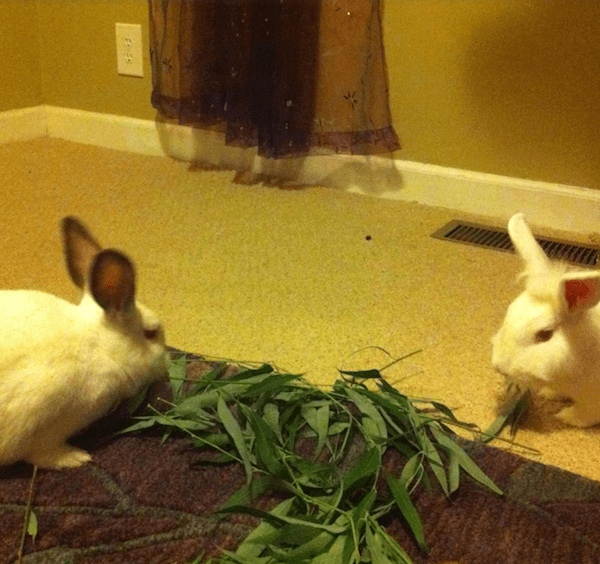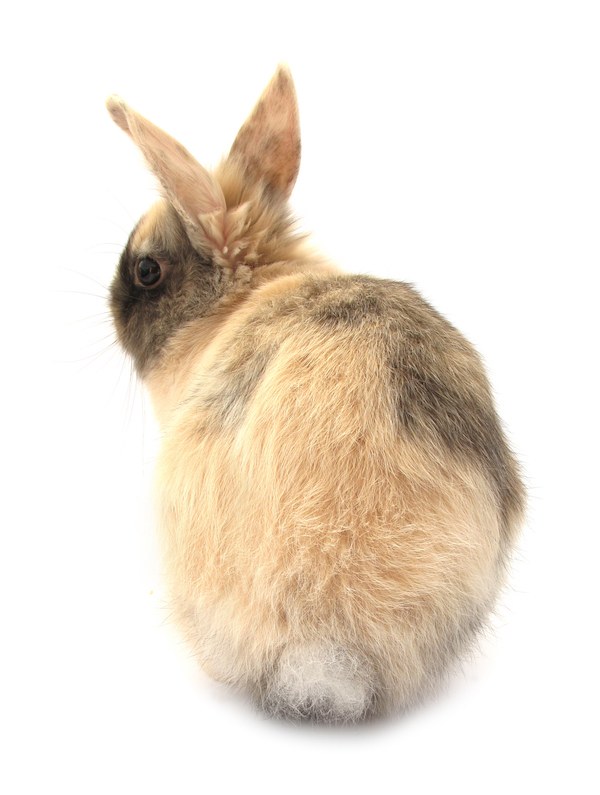The rabbits are ready to meet up close. You are ready too...all nice and calm and present.
It is worth a little review of what you are going to be watching for, when to interfere, and when to let the buns figure things out for themselves.
One rabbit in a relationship is usually in charge. This isn’t much different from other relationship between animals who live in groups…and if you have experience with dogs, horses, or other pack animals this will help you understand the mentality a bit. All pack mentality does share some rules. But remember: rabbits are PREY, so there are some differences as well. They are vulnerable, small, opinionated, territorial, and FULL of individual personality. Little conundrums, they are.
You can brush up on rabbit body language here, and below are some typical behaviors you may well see during bonding sessions.
CHASING: in the wild, males chase females as part of “courting”. Sometimes, males and females chase each other Some of this is just fun and games, sometimes it is part of the dominance relationship. This behavior is not dangerous. Just let it happen. They are playing, or sorting something out, and it is fine. They need to get this out of their systems.
RUNNING CIRCLES AROUND STILL RABBIT: another typical behavior reminder of dominance. One rabbit will run around the other, who is sitting still and probably has ears back a bit, looking submissive.
MOUNTING: this is not a male-only behavior – females mount males as well. One or both rabbits may attempt this maneuver. As long as nobody seems irritated (nipping, biting, screaming) let this go on. It is just a little “I’m in charge” reminder, or even a sign of protectiveness (You’re mine!). The mount may be accompanied by a NIP to the back of the neck. NOTE: if one rabbit mounts the other in “reverse” (mounting from the front, so the sensitive bits are over the face of the other rabbit), you will need to referee that move. Particularly a male rabbit can be badly injured from a bite to the sensitive bits!
NIPPING: Since rabbits are using their paws so can’t tap the other rabbit with a hand as they play, they use nips. Nips are little attention-seeking pecks, like running up, tagging your playmate, and saying “IT!” (Edie Sayeg calls this the Hit, Nip, and RUN – a perfect description). You may even find a little tuft of hair on the floor after a nip. So long as nobody is actually bitten and play continues in a friendly manner, there is nothing to worry about. NIPS can also happen if someone is, say, using the litter box and doesn’t want to be disturbed. It is a mild complaint, a “cut that out”. As long as the other rabbit pays attention to the warning, all is good and communication has been successful…just watch for signs of escalation.
MIRRORING: this is a great sign! One rabbit copies the other. So Daisy is stretched out on one side of the area, and Max goes and stretches out on the other side of the area. Lovely! Over time, they’ll get closer and closer and start to do these things together.
GROOMING: another terrific sign! Mutual grooming is the single most important indicator of a bonded pair. One rabbit will put their head down, a request for grooming, and the other will lick and snuffle, getting that fur in order. This is a sign of trust and affection.
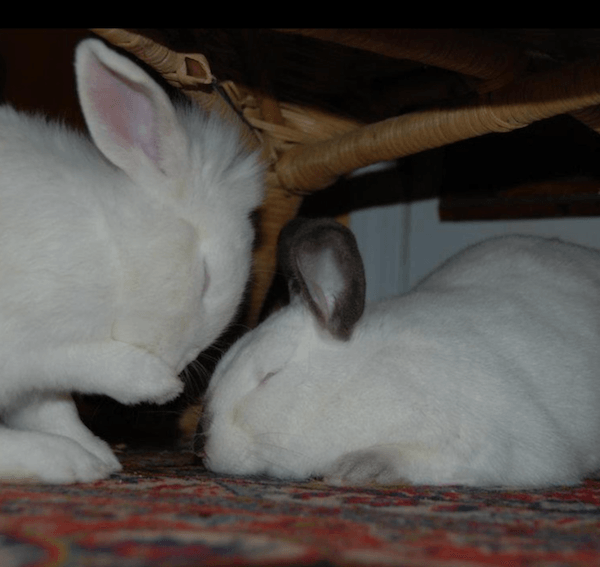
FLOPS, BINKIES, and TAIL FLICKS: these are all signs of happy, joyful rabbits. Tail flicks can be the hardest to see but they are the equivalent of the human female hair toss – a little happy flirty move that charms.
EATING NEAR EACH OTHER: get those greens out for every bonding session! A rabbit who is feeling comfortable around another rabbit will eat. Eating greens is a happy thing, and leaves the impression that bonding is fun! Make sure to put out several piles of greens, so your rabbits can start with some distance and work up to eating from the same pile.
THUMP – thumping with the back legs is a warning signal, and if the other rabbit gets the idea and moves away or stops whatever annoying thing they are doing, then all is good, no need to intervene. Keep watching though, because a situation may be developing that could escalate.
BUNNY BUTT – “giving the butt” is pouting. It is a disapproving rabbit telling everyone to just step off. It is often associated with your bunny wanting more attention, and can be a dramatic show of hurt feelings. Nobody ever said rabbits aren’t melodramatic.
TAIL CHASING: As long as buns are chasing one or the other (and usually the female is the one wanting to be chased) along the perimeter of the room in very large circles this is a very good sign the bonding is going along nicely.
TIGHT RUNNING CIRCLE: if the chasing turns into a tight circle, it is time to intervene and redirect.
BUNNY TORNADO: your rabbits are whirling around in tight circles around each other, and the whole thing is a blur. This is serious. We will discuss breaking up a fight a bit later, in detail.
What are some things you can do to support a smooth bond? Let's see!
Many thanks to Edie Sayeg of the Georgia House Rabbit Society for contributing to this series!



